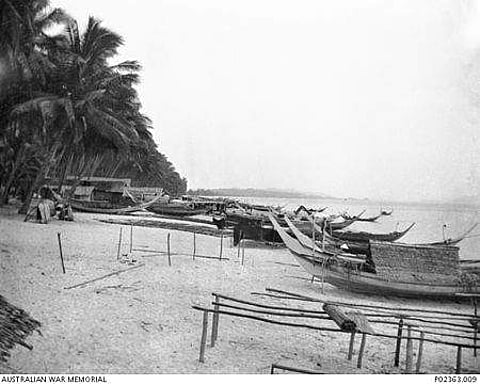

COLOMBO: World War II is said to have spread to the Eastern hemisphere with Japanese planes bombing the American naval base at Pearl Harbor in Hawaii. But the first Japanese ground attack in the war took place at Kota Baru in Malaya a good 20 minutes before Japanese planes struck Pear Habor. And Indian troops stationed at the beach were the first to face the Japanese amphibian landing.
Wednesday December 8, 2016 is the 75 th. Anniversary of the historical event in which Indian troops were key players.
New research reveals that the Japanese naval fleet, which had anchored three miles off Kota Bharu, started shelling the beach held by the 8th Indian Infantry Brigade at 12.30 am local time on December 8, 1941 when Japanese Air Force planes heading towards Pearl Harbor in the Pacific Ocean were still 20 minutes away from their target.
The attack on Pearl Harbour began at 2.38 am local time on December 8, 1941. But, the US forces, reporting it as per their standard time, misleadingly stated it to have taken place on December 7.
The palm-fringed, barbed-wired and heavily mined Kota Bharu Beach was held by the 3/17 Dogra Regiment under the command of Lt Col G A Preston. It was part of the 9 th. Indian Division based in Malaya.
Omar Senik, an 82-year-old local survivor of the first battle fought in Asia, told Japanese news agency Kyodo that local villagers and Indian soldiers were singing Hindi film songs on the beachfront when they saw Japanese landing craft approaching.
The Dogras promptly opened a volley of machine gun and artillery fire. In the ensuing battle, which saw intense hand to hand combat, 300 Japanese soldiers were killed. Some units from the State Forces (armies of Indian princes) were also stationed there but they apparently played no role. The Dogras and the Allied forces (mainly 8 th.Australian Divison) inflicted heavy casualties on the three crack Divisions the Japanese employed in the assault on Kota Baru.
The Dogras finally had to retreat because the Japanese, many of them hardened veterans of the war in China, came in waves. The Japanese invading party is said to have lost 300 men in the landing alone as the sea was turbulent. According to the official history of the Dogra Regiment ,the allied forced killed 3500 Japanese in this fighting. The 3/17 Dogras lost four officers, three Viceroy’s Commission Officers and 128 other ranks. In recognition of the tough fighting the Japanese later erected a monument at Kota Baru.
According to Peter Chen, the Japanese invasion fleet left the port of Samah on December 4, 1941. Although detected by British scout planes two days earlier, bad weather provided stealth for the invasion convoy.
On December 8, after some fighting at Kota Bharu, the Japanese troops took the coast cities of Singora (Thailand), Patani (Thailand), and Kota Bharu (Malaya). British planes attempted to attack landing ships, but Japanese troops made beachhead at Kota Bharu within three hours despite the air distraction. At an airfield near Kota Bharu, Indian troops who received incorrect intelligence that the Japanese were far ahead than where they actually were killed their own commander Lt. Col. Hendricks and fled the airfield without destroying anything, providing the Japanese invaders a fully working airfield along with fuel and ammunition.
Australian troops who were further inland tried their level best to thwart the Japanese, but were overwhelmed.
General Yamashita, in Singora, negotiated with the Thai government, and won an agreement that allowed Japanese troops to move within Thai borders toward Malaya without local resistance. Meanwhile, Colonel Tsuji's men, disguised in civilian attire, secured key bridges beyond Malaya's borders before the British could destroy them on their retreat.
No reinforcements from United States' Philippines appeared during the landings, as the US forces were busy fending off a nearly simultaneous invasion at Philippines and at Pearl Harbor.
On the same day, December 8, Japan sent her first air raid on the city of Singapore, resulting in 61 deaths. The British command in Singapore still did not call for a general blackout of the city.
The Dogra brigade took part in all early campaigns in Malaya, but retreated to Singapore along with other Allied forces. After it surrendered to the Japanese in Singapore on February 15, 1942, it was officially disbanded